Sways of dazzlingly Helenium ‘Moerheim Beauty’, yet surprisingly the man doesn’t like orange. ‘I am strict about colours’, he explained to Robin Lane Fox1 ‘No orange. It annoys me’. Yet despite this most unfortunate of orange oversights, particularly on account of my very orange ancestry, the ex RBS chief, Stephen Hester’s Broughton Grange is truly impressive. Much to the credit of that Tom-ever-so-skillful-Stuart-Smith and his superbly striking walled garden.
Located in the North Oxfordshire countryside, set in the rather generous 350 acres, sits the often described ‘most significant contemporary garden in the country’; Brougton Grange. Evidence suggests, a farmhouse existed there in the 17th century, but the gardens and house were established in the Victorian era. However, only since its purchase by the Hesters’ in 1992, has the estate undergone substantial renovation.
Walled gardens are often restored, yet rarely built as they tend to come with a rather heavy price tag – thank goodness for bankers! Commissioned in 2000, Tom Stuart-Smith created the enormous walled garden, isolated from and bearing no resemblance to the Victorian house. ‘Attachment and separation’ is how the designer explains it, which in some way is a bonus as I’m not sure how even the cleverest of designers could put a modern slant on ornate Victorian architecture.
The garden is not fully walled, as the eastern side is open to the countryside, blending beautifully with the views of rural Oxfordshire. The impressive stepped stone walls, and other hard landscaping features such as the gates and garden buildings, were designed by architect Ptolemy Dean.
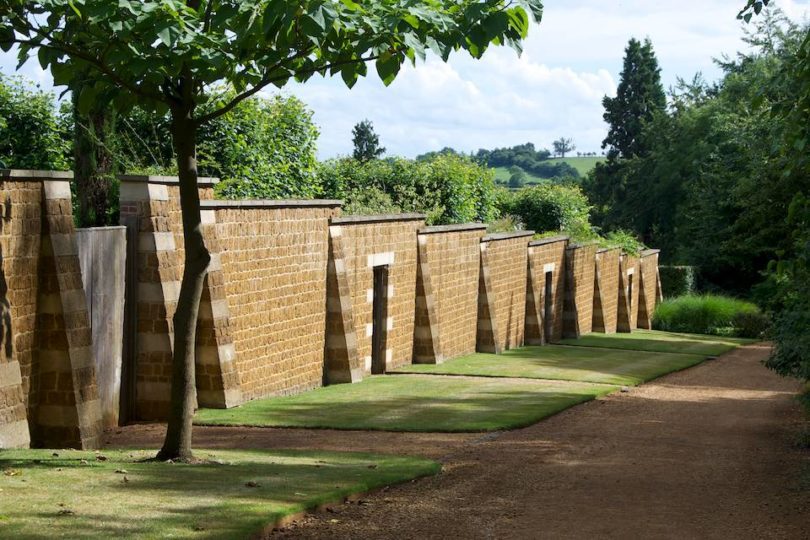
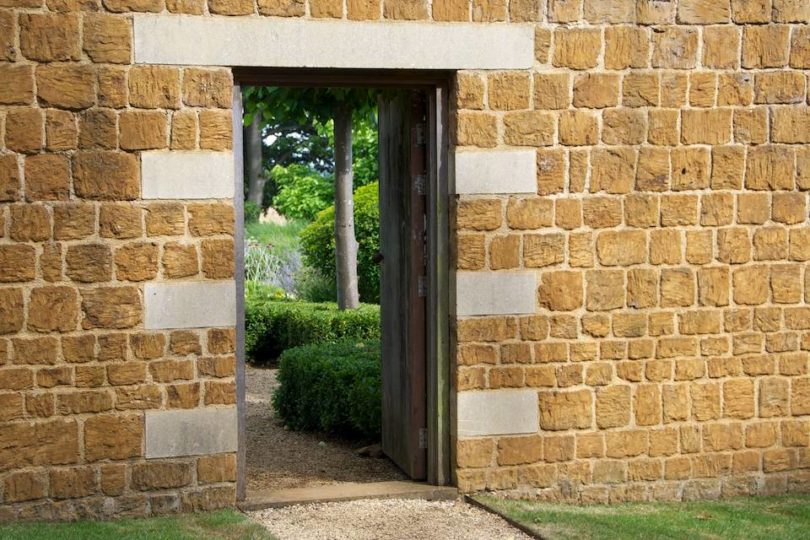
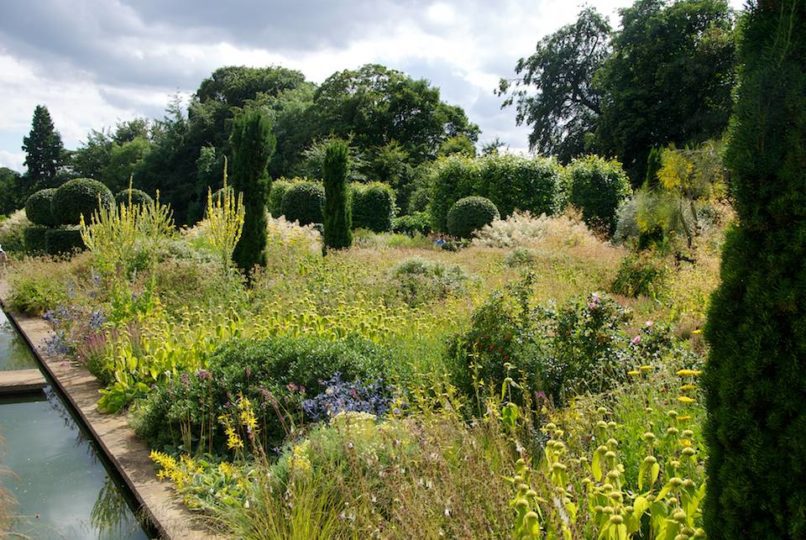

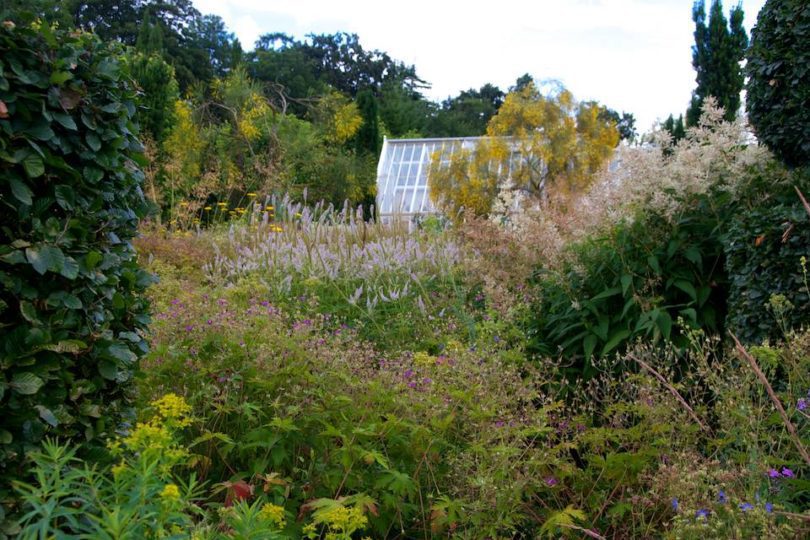
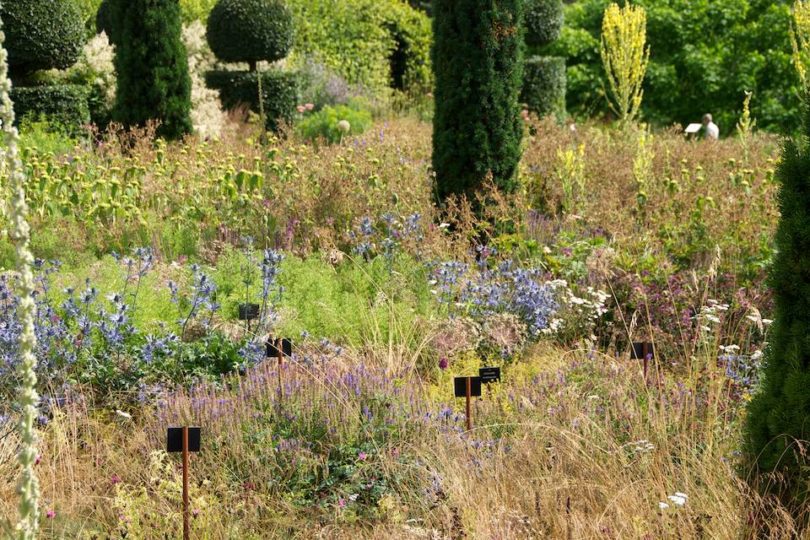
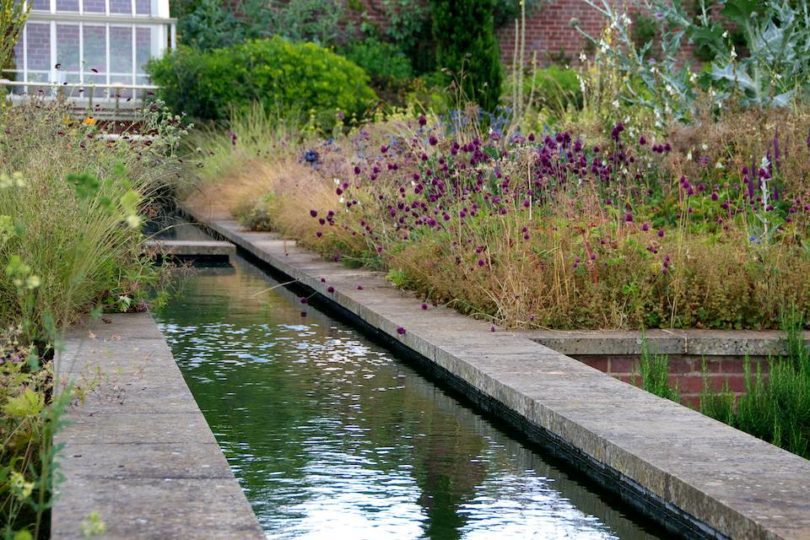



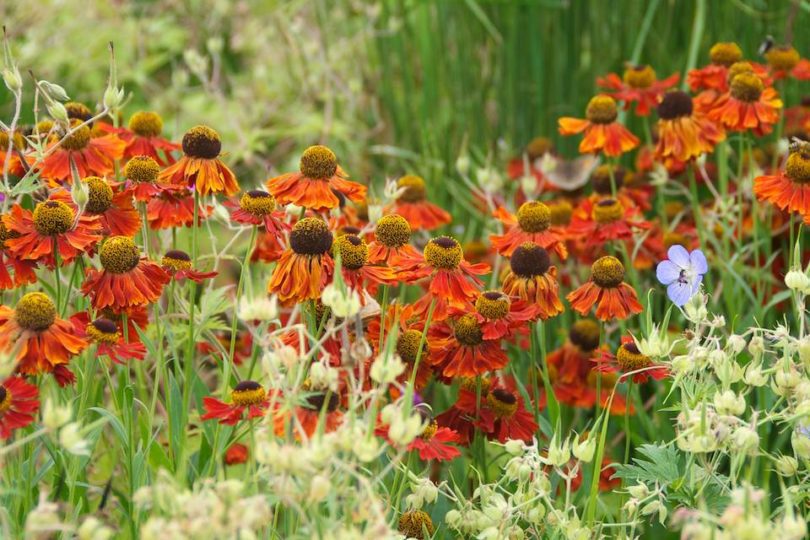

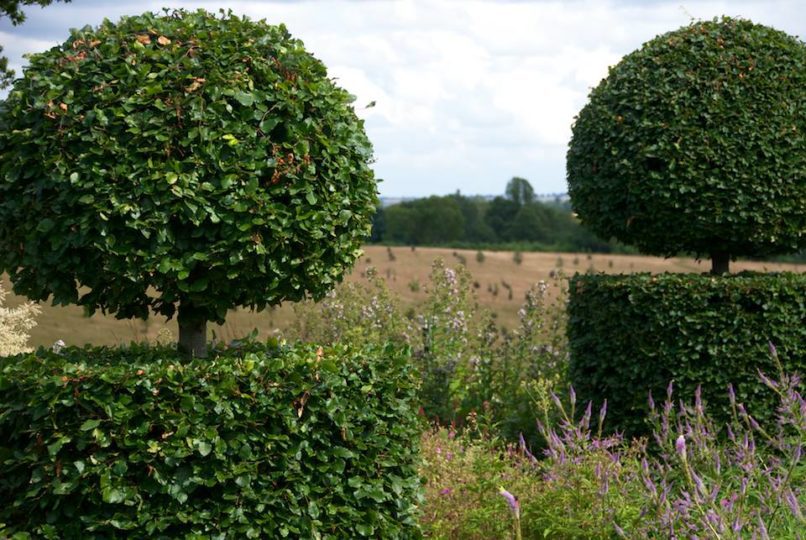

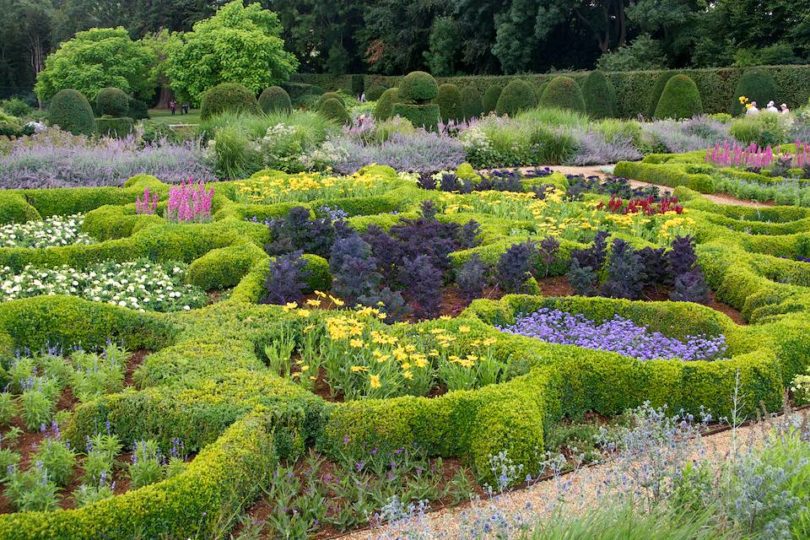
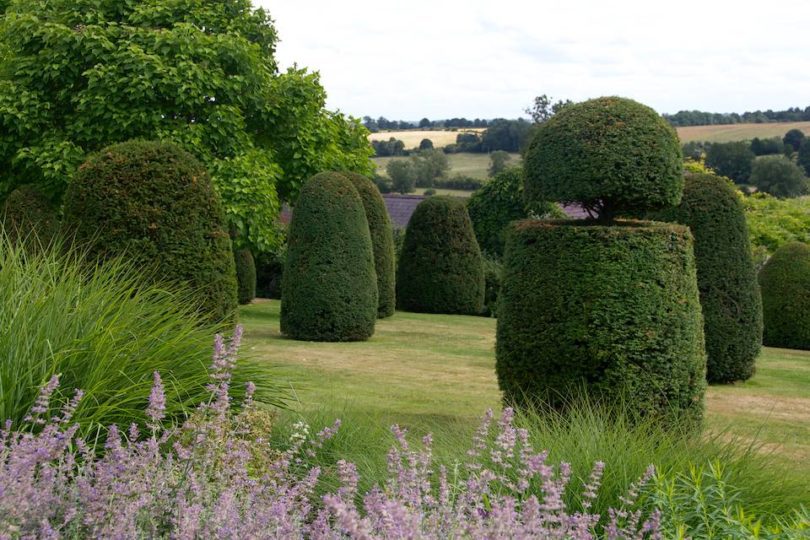
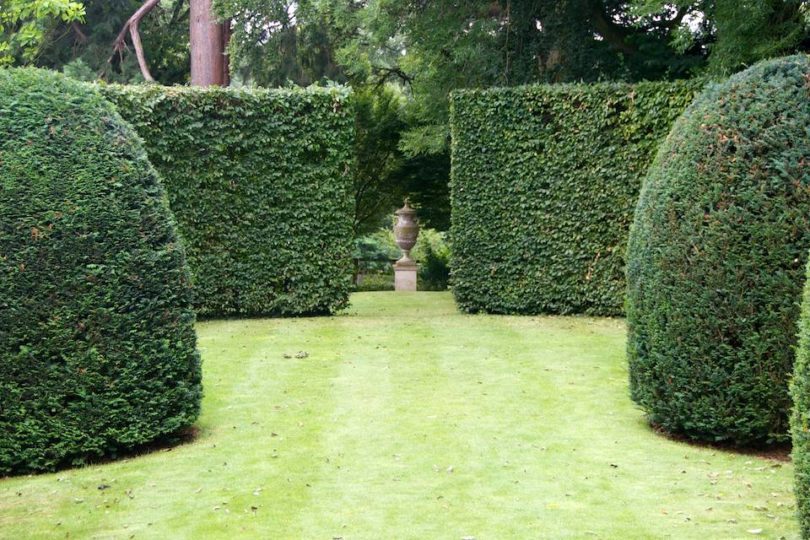

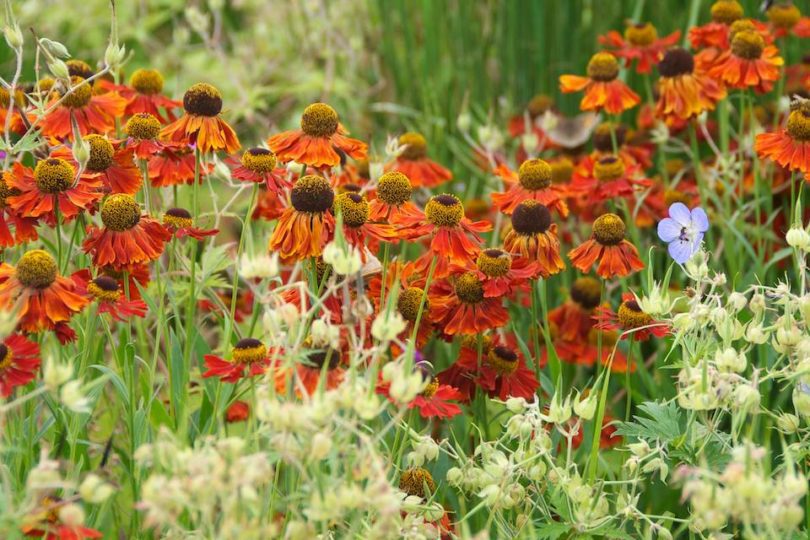

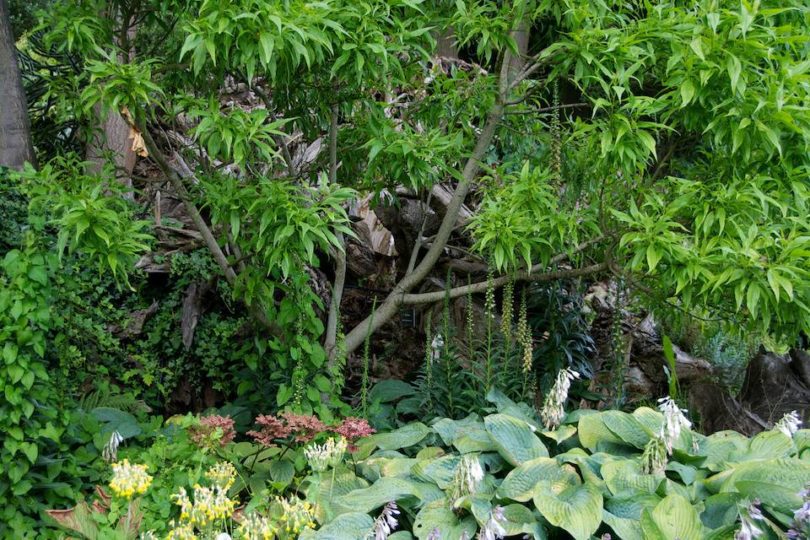

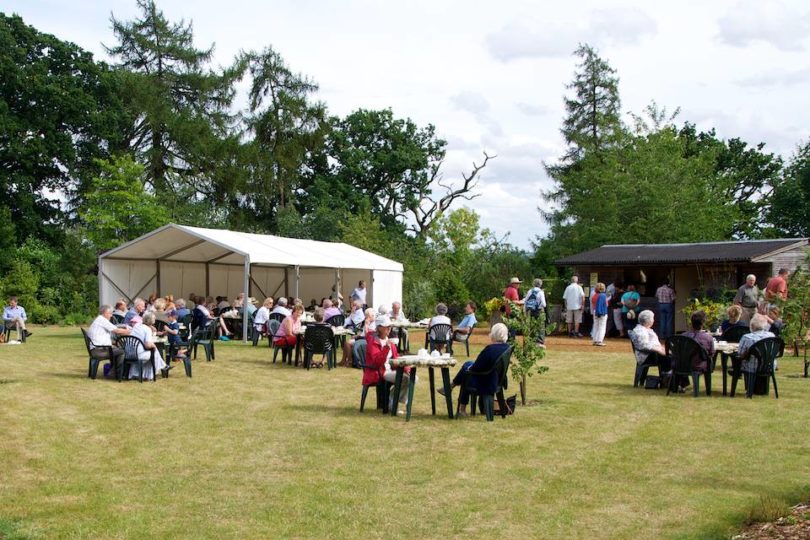
Triumphant terraces
Stuart-Smith’s oeuvre is very much a triumph of terracing. Three substantial terraces, each approximately 1200m2, gently cut into the slope. The upper terrace, planted Prairie style with Stuart-Smith flair, boasts a mass of perennials, with great waves of grasses, veronicastrum, phlomis, helenium and other prairie marvels, cleverly studded with bold architectural plants such as Allium sphaerocephalon and eryngium.
On close inspection, the conventional pretexts of my recent RHS course, where planting in sets of 3, 5, and/or 7’s is advised may need to revisited to accommodate Stuart-Smith’s more generous groupings of at least 30, 50, and/or 70’s to achieve that wonderful congruent mass of plants. Tall, slender taxus baccata spires punctuate the planting, adding height and another clever dimension of interest.
An impressive rill cuts sharply through the terrace, running to an über contemporary pool with stepping stones, further down the slope. Taller perennials dominate the second terrace including many of my favourites; veronicastrum, Persicaria polymorpha, Amsonia tabernaemontana, Calamagrostis × acutiflora ‘Karl Foerster’, molinia, and miscanthus. Formal, and impeccably pruned beech topiary is dotted around, providing both height, structure to the garden, and create wonderful views through the garden and to the rural countryside. All very clever, Mr Stuart-Smith.
Parterre-ville
The lower terrace is dominated by Stuart-Smith’s ‘microscopic leaf structure’ inspired, box parterre. Kudos to the man for adding a 21st century twist to the ye oldie ‘Parterre de broderie’ concept, but despite the ingenuity, its not a personal favourite. The loose planting on the initial two terraces, open pool, and general, boundless ‘rural yet designed’ feel of the garden ends here, in what is by definition a rather restrictive knot garden. As knot gardens go, its a very good one, just not one that will hurriedly be repeated chez nous. Admittedly, my shockingly deficient appreciation of the lower parterre could have been rooted in its rather discordant planting, which seemed more Smithy rather than Stuart-Smith.
Adam Frost explained that one of main attractions for garden designers to do a Chelsea show garden is the ability to see the finished product, exactly as intended. Realistically, gardens take years to mature and grow into their designs, where owners will, and quite rightfully make the garden their own by ‘adding’ to the planting. Eying the planting in the lower parterre, one can’t help but wonder if that is the case here? With time to kill post RBS, and the number of gardeners at Broughton Grange trimmed from ten to four, has Hester been gardening? There were conspicuously no orange flowers included…
Below the walled garden, is a collection of traditional tightly clipped yew topiary on immaculately mowed lawn, which lead one on towards, the lower end of the garden to the arboretum, sunken garden, stumpery and back up towards the house through the long borders and parterres. Hester certainly likes his parterres as including Stuart-Smith’s leafy number, there are two more in front and adjacent to the house. The latter incidentally is ingeniously planted with veronica, silver Anaphalis triplinervis ‘Sommerschnee’ and Allium christophii.
Oxandry
Stuart-Smith’s ‘attachment and separation’ theme for this garden is rather more fitting than he may have initially thought. As much as I admire this garden, it confuses me. The core masterpiece, the walled garden, is situated to the far east of the house, completely out of sight of it. Instead the house looks over the, granted not unattractive, yet conventional long borders. All that novel beauty is hidden.
In his interview with Robin Lane Fox, Hester revealed that he was inspired by Villandry in France, with all its varying garden themes, which explains the collection of abundant attractions; the walled garden, arboretum, stumpery, long borders, parterre(s) and so forth, yet there seems no real connection between them. The undoubtedly Highgrove inspired stumpery for example, sits rather alien in a field without much purpose or association. Don’t get me wrong, it is quite a nice stumpery capable of making Prince Charles green(er) with envy, but is it there just to tick a box? The myriad of signposts, and plant labels around the garden, which agreed are very helpful to the visiting punters, but would you have them in your garden? Wandering around Broughton, one can’t help but wonder if this is a garden created for personal enjoyment or just for show? My confusion is undoubtedly due to my naive reasoning in that gardens have some connection to the house, location and crucially the owners/gardeners, and I just can’t read this one.
None of that really matters though. Whether created for personal reasons or for show, I really enjoyed seeing the garden and look forward to visiting again. The garden is open several times in the year, for both the NGS, as well as Katherine House Hospice which is commendable, particularly bearing in mind the substantial crowds visiting. Broughton Grange is an impressive garden, that is well worth a visit with seasonal interest guaranteed from spring to late summer. Incidentally, the 5000 bulbs spring display in the lower parterre every year, is apparently planted with a petrol auger. Genius. Santa will be hearing from me.
Footnotes
- Robin Lane Fox, ‘RBS chief Stephen Hester on the vision behind his country garden’, Financial Times, 19 July 2013.
